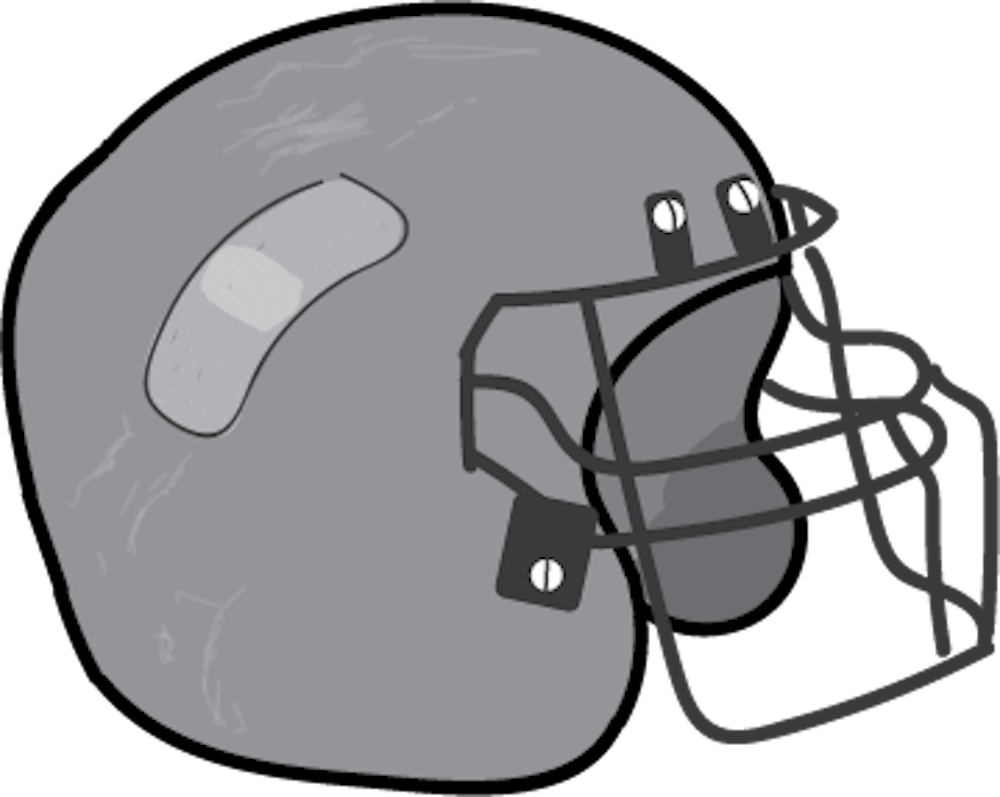After the NFL Combine, the employees of Biocore, a faculty-founded engineering research company, have been quite busy. Throughout 12 years of collaboration, Biocore — founded by University mechanical engineering professors Jeff Crandall and Richard Kent — has partnered with the University’s Center for Applied Biomechanics to improve the safety of football through equipment testing and experimenting with test dummies, head impact simulators and mouthguard sensors to track players’ movement on the field. This research has influenced the NFL, going so far as to change game rules to improve safety.
With the aim of improving the quality of life of players through injury mitigation, the Center for Applied Biomechanics conducts tests which look at the human body’s mechanical response to impact. While they started out only looking into automobile crashes, the Center has since included both military and sports injury as well. One such research project, which was brought to them by the Department of Defense, led to the creation of an underbody blast simulator to improve the safety of military tanks.
Crandall and Kent are the director and deputy director, respectively, of the Center for Applied Biomechanics. Thirty years after its conception, Crandall is now director of the multidisciplinary team, made up of mechanical and biomedical engineering graduate students, as well as faculty from mechanical engineering and the medical school.
“If you look at its core, what the Center tries to do is figure out how the body responds to different forces and how we can make counter measures that will reduce those forces and prevent injury,” Crandall said.
Approximately 12 years ago, the NFL approached the Center about researching methods to reduce the high number of injuries seen in football, with a focus on lower limb injuries such as ankle sprains and turf toe. In response, Biocore and the Center began assessing the ability of cleats to stiffen at certain angles that would protect the foot from injury. These cleat testings then led to body padding projects including knee and shoulder pads, and finally, head injury research to reduce concussion occurrences.
To tackle this new aspect of injury, Crandall and the research team paired with NFL videographers to look into each concussive scenario that occurred in the NFL from 2015 to 2018. From there, they created a small sensor that fits into the mouthguard of players, used to gain a clearer understanding of what was happening on the field.
Due to the team’s close relationship with the University’s football team, the mouthguard sensors were pilot tested with the players last season during games and will be tested by four NFL teams this coming season. According to Erin Sánchez, Class of 2017 alumna and Biocore employee, the sensors will help create position-specific helmets in the future.
“[The sensors show] how impacts affect each player and how their heads move during an impact,” Sánchez said. “A wide receiver might have one big hit whereas an offensive lineman will have a lot of little hits. That'll help us get to position-specific [helmets].”
In addition to creating position-specific helmets, the data analysis done by Biocore has led to rule changes within the NFL from last season to this season. Because kickoffs hold the highest number of concussive incidents, the kicking team can no longer have a running start, and players can no longer lower their head to initiate contact. The research has also led to the prohibition of 10 helmet types, as well as the creation of a helmet-ranking system that educates players on how to best protect themselves.
According to Crandall, the work they have done has led to a 29 percent reduction in regular season game concussions in the last year alone. Of the returning NFL players, 55 percent have upgraded their helmets, and helmet manufacturers have begun building better helmet models.
“We went from having 41 percent of the NFL in [top helmets] all the way up to 74 percent,” Crandall said. “I think that's one of the big factors, in addition to the rules, that led to the injury reduction.
Through the mouthguard sensors and an expansion of the data analytics side of their research, Biocore and the Center for Applied Biomechanics are continuing towards “the next generation of helmet.” With new data on player position and location, speed and equipment worn during impact — all collected through observing game footage — the research team is quantifying what happens on the field and turning that understanding into necessary safety measures.
"Overall, we are trying to make football safer while keeping the integrity of the sport,” Sánchez said.







